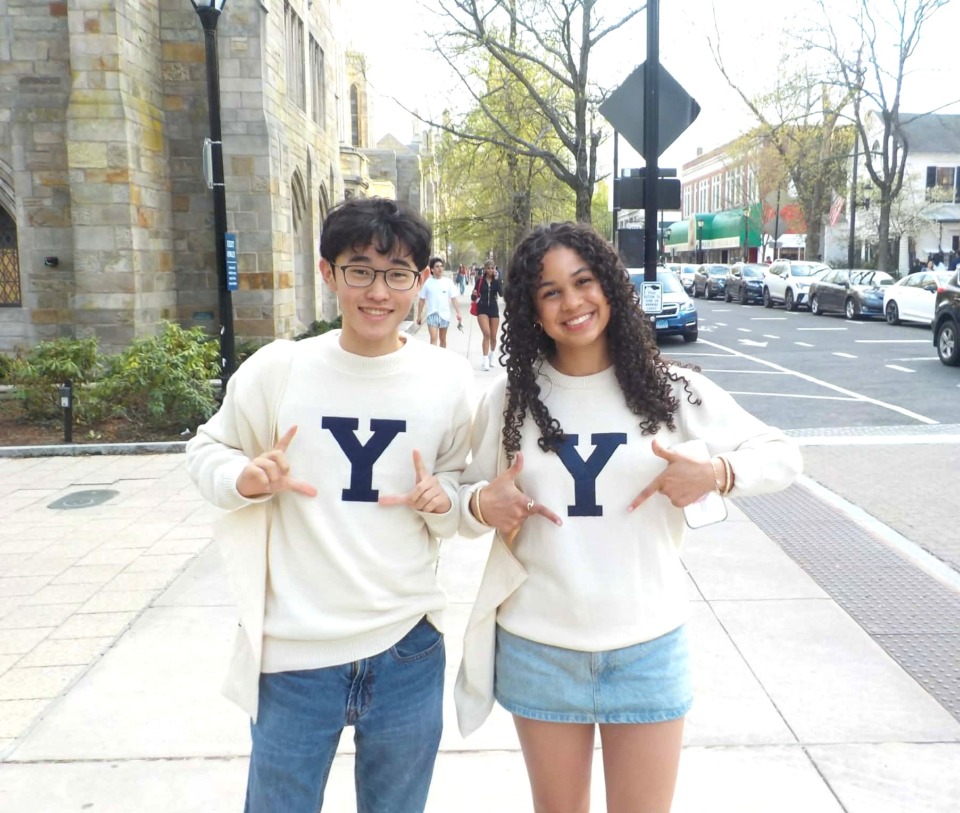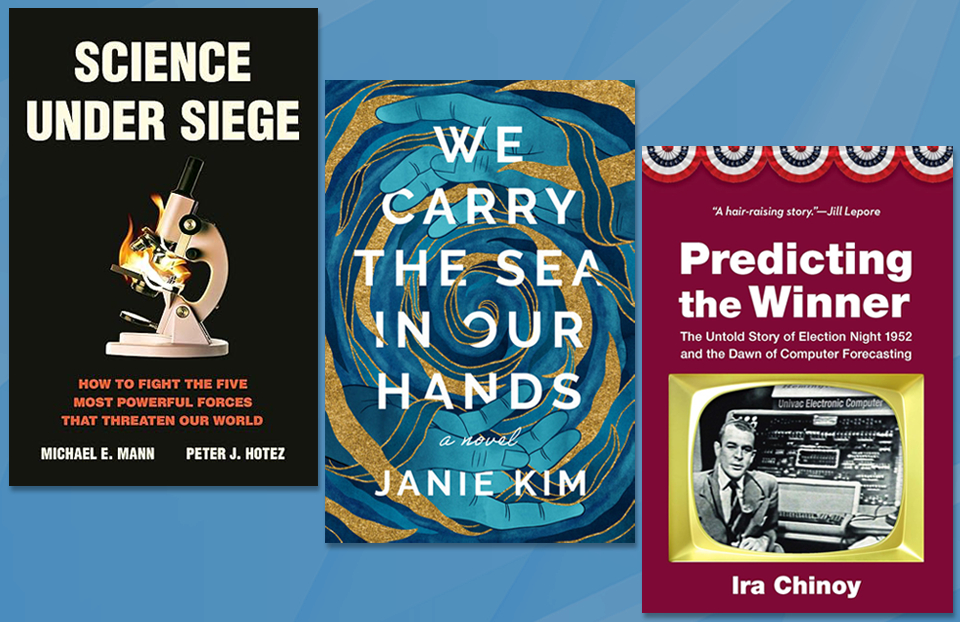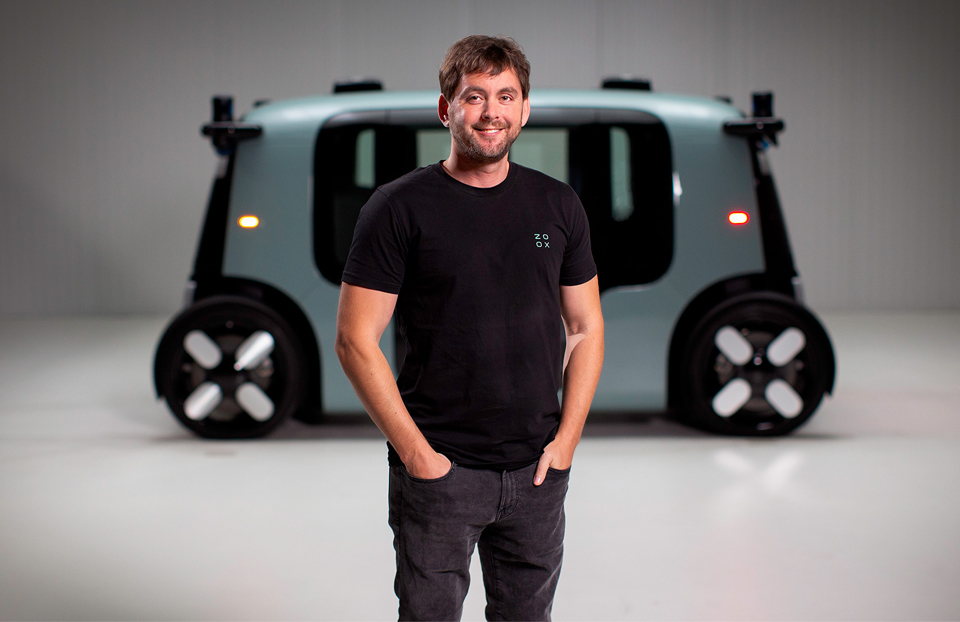From Westerville, Ohio to Kamchatka: Life After STS
Dave Deamer, selected as one of the top ten finalists at the Science Talent Search in 1957, is now a Research Professor in Biomolecular Engineering at the University of California-Santa Cruz.

When I try to explain my lifelong interest in science to friends, I like to compare it to a career in music. A few rare individuals have a passion and a talent for music, and that’s all they want to do in life. Science is like that. It’s all I ever wanted to do, and in my high school years near Columbus, Ohio, I was fortunate to be part of a small group of like-minded boys who got together to form the Westerville Science Club. We chased butterflies, explored caves, made rockets and most importantly, entered local science fairs. I was lucky enough to also have wise and caring parents. For a Christmas gift, my father bought a fine old microscope for me. It was black, with brass fittings, and had two objectives that gave 100X and 400X magnification. I began to explore a new world that I am still exploring today in my lab. It was a world of daphnia and copepods, diatoms and rotifers, paramecia and amoebae, all thriving in a drop of pond water.
While using my microscope to examine a smelly concoction produced when hay is allowed to decay in water, I noticed something interesting. The protozoa got so dense that when I placed a drop on a microscope slide, literally hundreds could be seen. But they did not just swim around at random. After a while they began to form little aggregates, which then turned into circles that began to move outward. The smaller circles ultimately joined into one large circle.
Isaac Asimov once said that a scientific discovery is not made by shouting “Eureka!” but by thinking to oneself, “That’s funny…” I was thinking about those funny rings of protozoa when I heard about the Westinghouse Science Talent Search and decided to submit an entry. I made up a hypothesis, which was that the protozoa used up the oxygen in the center of the clumps they formed, then moved out into the region where these was still oxygen present. They also gave off carbon dioxide which made the centers not only anoxic, but acidic. I tested the hypothesis by constructing a little slide holder through which a variety of gases could be passed, such as nitrogen, oxygen, and carbon dioxide. I also added a pH sensitive dye that would change color in the presence of acid. My prediction was that if the circles were due to oxygen deprivation, the circles would not occur in a pure oxygen atmosphere. Furthermore, the centers of the circles should turn pink if they were more acidic due to the carbon dioxide build up. And finally, a pure carbon dioxide atmosphere would also inhibit circle formation because the entire solution would become acidic.
I did the experiments, took photos of the results, which confirmed the hypothesis, and wrote a report. My mom typed it up, we sent it off to the STS, and after a few weeks I forgot all about it. A month passed, then two months. One day Mom greeted me after I biked home from school. “There’s a telegram for you from Washington, DC!” I ripped it open, wondering why anyone would send me a telegram. My project had been picked as one of the 40 finalists in 1957! A month later, Mom and Dad drove me to the train station and I headed east overnight in a Pullman sleeping car. It was a little scary, because it was the first time I had ever traveled anywhere by myself.
Now that nearly fifty years have passed, I only have a few fleeting memories of the time in Washington. I do remember tours of the National Institutes of Health, the Naval Research Laboratories, and the Smithsonian. We met Admiral Hyman Rickover, who had directed the development of the first atomic submarine for the Navy. There was even a little romance, because I met Dorothy Hollingshead, a finalist from Atlanta and my first serious girlfriend. On the last day, the winners gathered at the National Academy of Sciences. When I visit the Academy today, I can still see the green marble columns where I set up my exhibit along with 39 other budding young scientists. At the banquet that followed, the first prize winner was announced, a boy who had built a cloud chamber for visualizing radioactive decay.
Qualifying for STS had a huge effect in the years that followed because of the scholarship that resulted. Dad was an engineer at North American Aviation, earning just $10,000 per year, and had a growing family to care for. When it was announced that I was one of the 40 finalists at STS, I was invited to apply for a company scholarship, so I took a test, and a couple of weeks later Dad and I were invited to visit the president of the company. He congratulated us and gave me a scholarship certificate that would pay tuition, room and board at the college of my choice, along with $200 per month pocket money! When all the costs were added up, it amounted to around $20,000. The $100 that Dad paid for my old microscope turned out to be a pretty good investment!
I decided to attend Duke University as a Chemistry major, then completed a PhD at the Ohio State University, where I developed an interest in biological membranes. This carried over into post-doctoral studies at UC Berkeley, where I learned to work with electron microscopes and met Dan Branton, then a young assistant professor. This is another thing about a career in science- friendships, once made, can last a lifetime. Over the past 20 years Dan and I developed the concept of nanopore sequencing of DNA. In this technique, single molecules of DNA are drawn through a nanoscopic pore by electrophoresis and each base is identified at a rate of 50 per second. This year, a British company plans to market a hand-held sequencing device based on the technology we developed.
 The other thing I have learned about a life in science is that you become a citizen of the world. International science is like a small country, and I have worked with colleagues in Canada, Mexico, Great Britain, France, Italy, Israel and Russia. I have done field work in volcanoes of Kamchatka, Hawaii, Iceland, New Zealand and Mount Lassen, California, where I try to understand how membranes could have helped the first forms of life get started. I recently wrote a book called First Life that describes some of these ideas.
The other thing I have learned about a life in science is that you become a citizen of the world. International science is like a small country, and I have worked with colleagues in Canada, Mexico, Great Britain, France, Italy, Israel and Russia. I have done field work in volcanoes of Kamchatka, Hawaii, Iceland, New Zealand and Mount Lassen, California, where I try to understand how membranes could have helped the first forms of life get started. I recently wrote a book called First Life that describes some of these ideas.
So, to finish up, what would I say to the Intel STS finalists today? There are two things. First, if you love science like a musician loves music, let it happen. Let your passion take you to a good university, go on to a PhD and post-doctoral research, and then continue your research career in academics, or government institutions like NIH or NASA, or companies like Genentech or Intel, to name just a few who need your talents. Or start your own company!
The second thing is to give back some of what was given to you. Watch for kids like yourself who share your passion, and help them on their way. Two years ago, a local high school teacher told me she had an unusually good student in her class named Saige Manier who wanted to do a science fair project but needed a mentor. I got in touch with Saige and suggested that she might have fun trying to figure out how flea seeds jump. (If you don’t know what flea seeds are, look up ‘jumping galls’ in YouTube. You will be surprised.) Saige did the research, tested a hypothesis, and took top prize at the county and state science fairs. Then she was invited to compete at the Intel International Science and Engineering Fair in Pittsburgh, where she was awarded an $8,000 scholarship to a college of her choice. Saige chose Stanford and will begin her freshman year this fall. I’m sure you can imagine that Saige and her parents, both elementary school teachers, were very happy with her achievements. I was happy too, because I had given something back.


